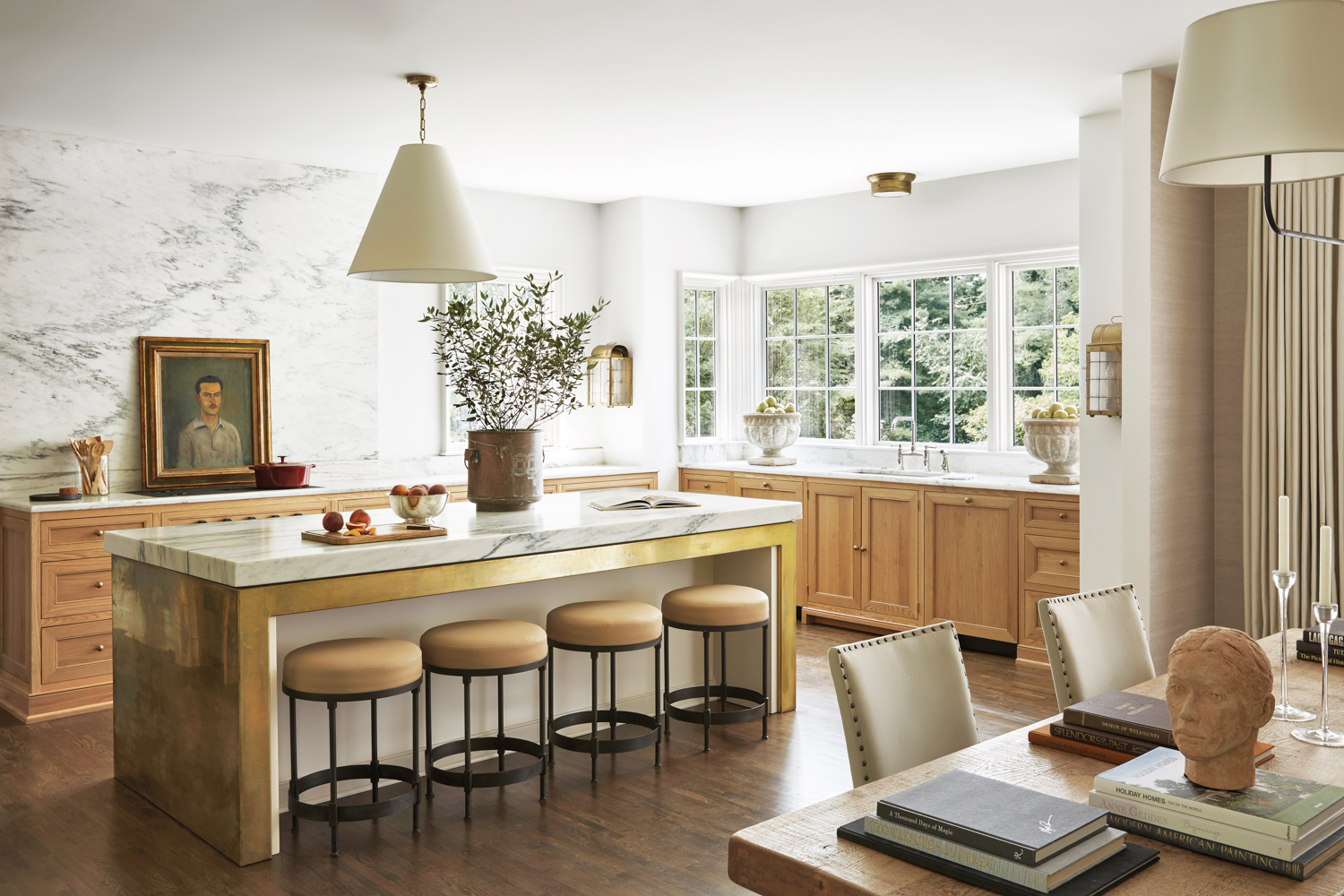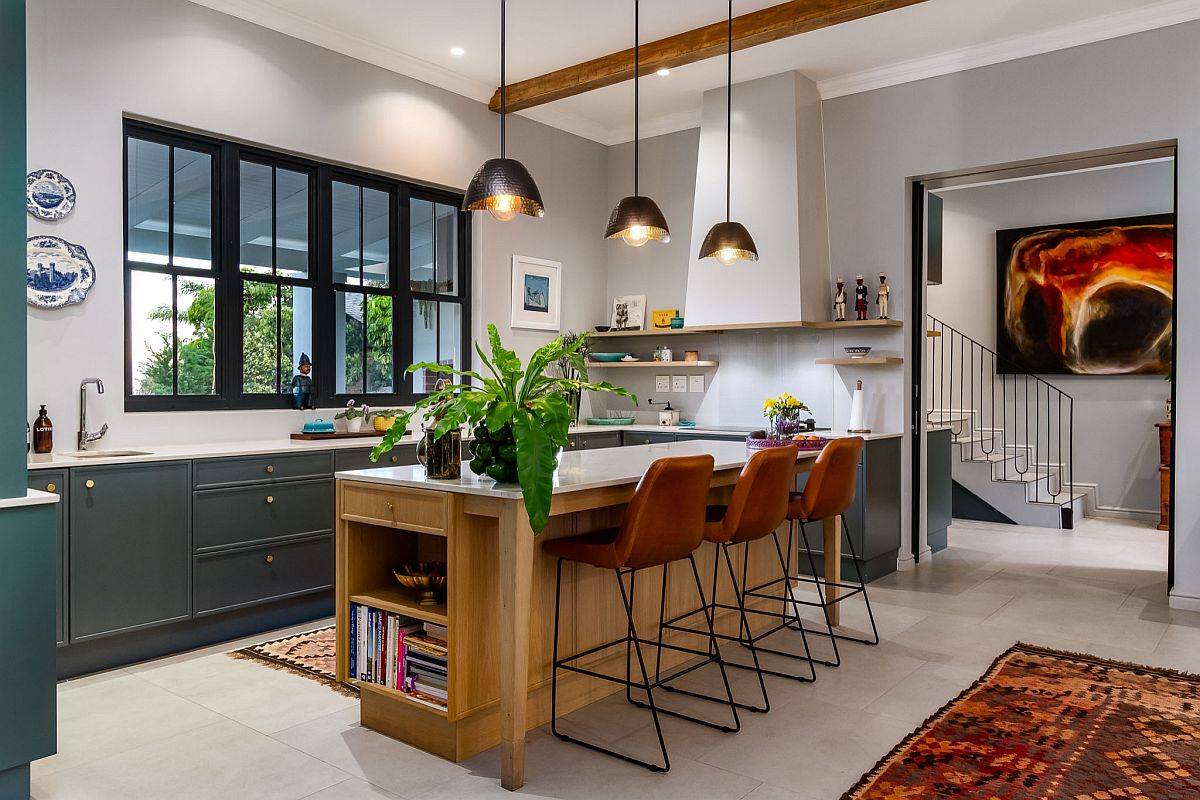The Appeal of Kitchen Design Without Upper Cabinets

The absence of upper cabinets in kitchen design creates a unique and appealing aesthetic, offering a multitude of advantages. This design choice embraces an open and airy feel, transforming the kitchen into a more inviting and functional space.
The Benefits of an Open and Airy Kitchen, Kitchen design without upper cabinets
Eliminating upper cabinets opens up the kitchen, enhancing the sense of spaciousness and visual clarity. The absence of bulky cabinets above the countertops allows light to flow freely, brightening the space and creating a more welcoming atmosphere. This open design fosters a sense of openness and freedom, making the kitchen feel less confined and more inviting.
The Impact on Visual Clarity
The absence of upper cabinets contributes significantly to visual clarity in the kitchen. Without the obstruction of cabinets, the eye can easily scan the entire space, creating a sense of order and organization. This visual clarity can be particularly beneficial in smaller kitchens, where every inch of space is precious.
The Illusion of a Larger Kitchen
The removal of upper cabinets can create the illusion of a larger kitchen, even in smaller spaces. The absence of bulky cabinets above the countertops draws the eye upwards, making the ceiling appear higher and the space more expansive. This effect is further enhanced by the use of light-colored walls and countertops, which reflect light and create a sense of openness.
Modern and Minimalist Kitchen Aesthetics
The absence of upper cabinets seamlessly integrates with modern and minimalist kitchen styles. The clean lines and open space created by this design choice align perfectly with the principles of minimalism, emphasizing functionality and simplicity. This design aesthetic is characterized by the use of sleek materials, such as stainless steel, wood, and glass, which complement the open and airy feel of the kitchen.
Practical Considerations for Upperless Kitchens

While the aesthetic appeal of an upperless kitchen is undeniable, practicality is equally important. The absence of upper cabinets necessitates thoughtful planning and creative solutions to accommodate your kitchen essentials. This section will delve into the practical considerations of designing a functional upperless kitchen, exploring alternative storage solutions and maximizing vertical space.
Alternative Storage Solutions
The absence of upper cabinets demands alternative storage solutions. Here are some practical options to consider:
- Open Shelving: Open shelving offers a visually appealing and accessible storage solution. They allow for easy display of your favorite dishes, cookbooks, or decorative items. However, they require meticulous organization and careful selection of items to maintain a clutter-free look.
- Integrated Appliances: Integrating appliances like refrigerators, ovens, or dishwashers into the cabinetry creates a streamlined and efficient design. These appliances often come with built-in storage compartments, maximizing space utilization.
- Under-Counter Storage: Utilize the space beneath the countertop with drawers, pull-out shelves, or cabinets. These solutions provide ample storage for pots, pans, and other kitchen tools, keeping them organized and easily accessible.
Maximizing Vertical Space
To ensure sufficient storage in an upperless kitchen, it’s crucial to maximize vertical space. Tall cabinets and pantry units can accommodate a significant amount of items, freeing up valuable countertop space.
- Tall Cabinets: Consider incorporating tall cabinets that extend to the ceiling. These cabinets provide ample storage for bulk items, seasonal ingredients, or infrequently used appliances.
- Pantry Units: A dedicated pantry unit can be a game-changer for an upperless kitchen. It provides a centralized storage space for groceries, dry goods, and other non-perishable items, keeping your kitchen organized and efficient.
Clever Storage Solutions for Frequently Used Items
In an upperless kitchen, it’s essential to prioritize the storage of frequently used items. Clever solutions can ensure these essentials are easily accessible without compromising on aesthetics.
- Magnetic Strips: Magnetic strips can be attached to the backsplash or side of a cabinet, providing a convenient way to store knives, utensils, or other metal items. This solution keeps them within reach while adding a touch of modern design.
- Under-Shelf Baskets: Under-shelf baskets, mounted beneath open shelves, provide additional storage for smaller items. They can be used to store spices, condiments, or even produce, keeping everything organized and easily accessible.
- Sliding Drawer Systems: Sliding drawer systems, installed within base cabinets, offer a highly efficient way to store items. They provide easy access to everything, eliminating the need to reach into deep cabinets.
Creating a Functional Upperless Kitchen

Designing a kitchen without upper cabinets presents unique challenges and opportunities. While it offers an open and airy aesthetic, careful planning is crucial to ensure functionality and avoid a cluttered look. This section explores key design principles and practical tips for creating a well-organized and efficient upperless kitchen.
Strategic Placement of Lower Cabinets and Appliances
The strategic placement of lower cabinets and appliances is fundamental to maximizing space and creating a functional flow in an upperless kitchen. By carefully considering the placement of these elements, you can optimize workflow, minimize wasted space, and create a user-friendly environment.
- Placement of Appliances: Consider placing appliances such as ovens, refrigerators, and dishwashers strategically to minimize walking distances and ensure a logical workflow. For example, placing the refrigerator near the food preparation area and the dishwasher near the sink can streamline tasks.
- Cabinet Depth and Placement: Deep cabinets can be beneficial for storage, but ensure they are not so deep that reaching items becomes difficult. Additionally, consider using pull-out shelves and drawers to maximize accessibility and visibility of stored items.
- Countertop Placement: Allocate adequate countertop space for food preparation, cooking, and serving. Consider creating distinct zones for different tasks, such as a prep zone, a cooking zone, and a serving zone.
Maximizing Counter Space and Maintaining a Clutter-Free Environment
Counter space is a premium in an upperless kitchen, making it essential to maximize its use while maintaining a clutter-free environment.
- Vertical Storage: Utilize vertical storage solutions like open shelving, pot racks, and hanging organizers to store frequently used items and free up valuable countertop space.
- Under-Counter Storage: Optimize space beneath the countertops by incorporating drawers, pull-out shelves, and tiered organizers for storing utensils, cookware, and other items.
- Built-in Appliances: Consider incorporating built-in appliances such as microwaves, coffee makers, and toasters to minimize countertop clutter and create a sleek, integrated look.
- Decluttering and Organization: Regularly declutter your kitchen and implement an organized system for storing items. This will prevent the accumulation of clutter and ensure a clean and functional space.
Incorporating Decorative Elements
While upper cabinets are absent, decorative elements can enhance the aesthetic appeal of an upperless kitchen.
- Backsplashes: Utilize eye-catching backsplashes made of tile, stone, or metal to create a visual focal point and add texture and color to the space.
- Open Shelving: Incorporate open shelving to display decorative items, cookbooks, or serving pieces. This adds visual interest and functionality, allowing for easy access to frequently used items.
- Lighting: Install a combination of ambient and task lighting to create a well-lit and inviting atmosphere. Consider using pendant lights over islands or countertops for focused illumination.
- Color and Texture: Utilize a balanced palette of colors and textures to create a visually appealing and cohesive kitchen. For example, you can use a neutral color scheme for the cabinets and countertops and introduce pops of color through accessories, backsplashes, or artwork.
Kitchen design without upper cabinets – Open kitchen designs without upper cabinets often embrace a minimalist aesthetic, maximizing vertical space and fostering a sense of openness. This approach necessitates strategic storage solutions, such as a well-organized small lateral file cabinet for storing paperwork and other essential items, ensuring a clutter-free environment while preserving the airy feel of the kitchen.
Kitchen design without upper cabinets can create a sense of spaciousness and airiness, but it also necessitates creative storage solutions. If you’re looking to add storage without sacrificing the open feel, consider incorporating a corner wall cabinet. This can provide ample space for dishes and other essentials while still maintaining the clean lines of your upper-cabinet-free design.
For a detailed guide on how to construct such a cabinet, you can check out this step-by-step guide: how to make a corner wall cabinet. By incorporating thoughtful storage elements like this, you can enjoy the benefits of a minimalist kitchen design while still maintaining functionality.